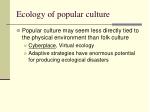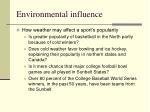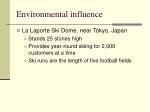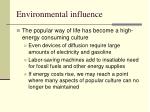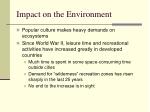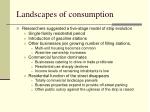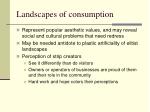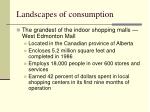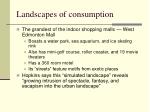Despite or because of its ubiquity, advertising is not an easy term to define. Usually advertising attempts to persuade its audience to purchase a good or a service. But “institutional” advertising has for a century sought to build corporate reputations without appealing for sales. Political advertising solicits a vote (or a contribution), not a purchase. Usually, too, authors distinguish advertising from salesmanship by defining it as mediated persuasion aimed at an audience rather than one-to-one communication with a potential customer. The boundaries blur here, too. When you log on to Amazon.com, a screen often addresses you by name and suggests that, based on your past purchases, you might want to buy certain books or CDs, selected just for you. A telephone call with an automated telemarketing message is equally irritating whether we classify it as advertising or sales effort. In United States history, advertising has responded to changing business demands, media technologies, and cultural contexts, and it is here, not in a fruitless search for the very first advertisement, that we should begin.
In the eighteenth century, many American colonists enjoyed imported British consumer products such as porcelain, furniture, and musical instruments, but also worried about dependence on imported manufactured goods. Advertisements in colonial America were most frequently announcements of goods on hand, but even in this early period, persuasive appeals accompanied dry descriptions. Benjamin Franklin’s Pennsylvania Gazette reached out to readers with new devices like headlines, illustrations, and advertising placed next to editorial material. Eighteenth- and nineteenth-century advertisements were not only for consumer goods. A particularly disturbing form of early American advertisements were notices of slave sales or appeals for the capture of escaped slaves. (For examples of these ads, click here for the Virginia Runaways Project site.) Historians have used these advertisements as sources to examine tactics of resistance and escape, to study the health, skills, and other characteristics of enslaved men and women, and to explore slaveholders’ perceptions of the people they held in bondage.
Despite the ongoing “market revolution,” early and mid- nineteenth-century advertisements rarely demonstrate striking changes in advertising appeals. Newspapers almost never printed ads wider than a single column and generally eschewed illustrations and even special typefaces. Magazine ad styles were also restrained, with most publications segregating advertisements on the back pages. Equally significant, until late in the nineteenth century, there were few companies mass producing branded consumer products. Patent medicine ads proved the main exception to this pattern. In an era when conventional medicine seldom provided cures, manufacturers of potions and pills vied for consumer attention with large, often outrageous, promises and colorful, dramatic advertisements.
In the 1880s, industries ranging from soap to canned food to cigarettes introduced new production techniques, created standardized products in unheard-of quantities, and sought to find and persuade buyers. National advertising of branded goods emerged in this period in response to profound changes in the business environment. Along with the manufacturers, other businesses also turned to advertising. Large department stores in rapidly-growing cities, such as Wanamaker’s in Philadelphia and New York, Macy’s in New York, and Marshall Field’s in Chicago, also pioneered new advertising styles. For rural markets, the Sears Roebuck and Montgomery Ward mail-order catalogues offered everything from buttons to kits with designs and materials for building homes to Americans who lived in the countryside–a majority of the U.S. population until about 1920. By one commonly used measure, total advertising volume in the United States grew from about $200 million in 1880 to nearly $3 billion in 1920. Advertising agencies, formerly in the business of peddling advertising space in local newspapers and a limited range of magazines, became servants of the new national advertisers, designing copy and artwork and placing advertisements in the places most likely to attract buyer attention. Workers in the developing advertising industry sought legitimacy and public approval, attempting to disassociate themselves from the patent medicine hucksters and assorted swindlers in their midst. While advertising generated modern anxieties about its social and ethical implications, it nevertheless acquired a new centrality in the 1920s.
Consumer spending–fueled in part by the increased availability of consumer credit–on automobiles, radios, household appliances, and leisure time activities like spectator sports and movie going paced a generally prosperous 1920s. Advertising promoted these products and services. The rise of mass circulation magazines, radio broadcasting and to a lesser extent motion pictures provided new media for advertisements to reach consumers. President Calvin Coolidge pronounced a benediction on the business of advertising in a 1926 speech: “Advertising ministers to the spiritual side of trade. It is a great power that has been intrusted to your keeping which charges you with the high responsibility of inspiring and ennobling the commercial world. It is all part of the greater work of regeneration and redemption of mankind.” (This address can be found online at a Library of Congress site on “Prosperity and Thrift,” which contains many documents on consumer culture in the twenties.)
Advertisements, as historian Roland Marchand pointed out, sought to adjust Americans to modern life, a life lived in a consumer society. Since the 1920s, American advertising has grown massively, and current advertising expenditures are eighty times greater than in that decade. New media–radio, television, and the Internet–deliver commercial messages in ways almost unimaginable 80 years ago. Beneath the obvious changes, however, lie continuities. The triad of advertiser, agency, and medium remains the foundation of the business relations of advertising. Advertising men and women still fight an uphill battle to establish their professional status and win ethical respect. Perhaps the most striking development in advertising styles has been the shift from attempting to market mass-produced items to an undifferentiated consuming public to ever more subtle efforts to segment and target particular groups for specific products and brands. In the 1960s, what Madison Avenue liked to call a “Creative Revolution” also represented a revolution in audience segmentation. Advertisements threw a knowing wink to the targeted customer group who could be expected to buy a Volkswagen beetle or a loaf of Jewish rye instead of all-American white bread.
http://historymatters.gmu.edu/mse/ads/amadv.html



